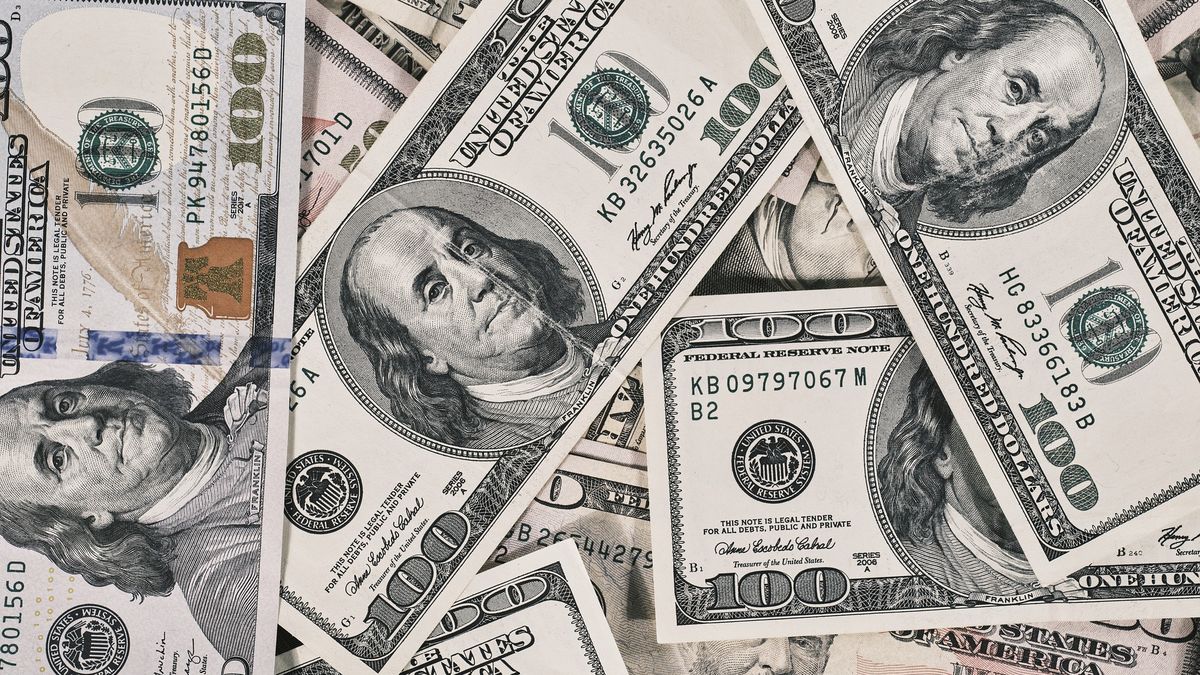The Dolar blue it was in the news again, it reached $212.50 on Tuesday, so far in 2022 it shows almost no variation and in the last 12 months it has risen 37%.
The official dollar could end the month at $115.30, so far in 2022 it has risen 12.2%, and in the last 12 months it has risen 23.2%.
Inflation, estimating 5.5% in April, would be rising 22.5% so far this year, and in the last 12 months it would rise 57.2%.
The fixed-term rate for individuals up to $10 million pesos is 46% per year, and if we take the effective annual rate we reach 57.07%.
The news should be that inflation is very high and has a negative impact on the domestic and foreign markets. The star product would be the 90-day pre-cancellable fixed term adjusted for inflation, which pays inflation plus an additional 1%.
The daily narrative is focused on the probable evolution of the blue dollar, thus spilling liters of ink foreshadowing the apocalypse, which will probably never come, however, it seems possible that we are going through the twilight of a politically very weak and highly mistaken government in the economic.
The first look to see if the blue dollar is about to fly higher is focused on the relationship of monetary liabilities versus reserves, this equation gives us an equilibrium dollar of $202, which doesn’t look high based on current prices. Academic observers disbelieve this measurement, however, if we correlate this relationship with the evolution of alternative dollars, we will observe that they follow very similar paths.
For the blue dollar to rise, it is necessary for the markets to be liquid, something that does not happen at present, so far this year the Central Bank has only issued $122,000 million, and in the immediate term we do not believe that they will issue pesos.
The Government has made the decision to finance itself more aggressively in the capital market. In the month of January it had debt maturities for $298,000 million and placed debt for $437,500 million. In the month of February he had maturities for $336,000 million and placed debt for $520,470 million. In the month of March he had maturities for $637,617 million and placed debt for $954,850 million.
In the first 3 months of the year, the treasury increased financing in the market by the sum of $641,153 million. The absorption of this mass of funds left the system with little liquidity.
In the first 3 months of the year, loans from the financial system to the private sector increased by $388,817 million, which is 60% of the money absorbed by the State. So it is difficult for the economy to grow.
The monetary policy rate went from 38% to 47% per year, time deposits increased from 37% to 46% per year. This had its correlate in corporate loan rates. They increased the rate to be financed with cards from 3 to 24 months.
The quarter ahead is one of high illiquidity, in the month of May the companies will have to face the parity increases, and in addition those that close the fiscal year in the month of December (41% of the companies) must pay Profits.
In the month of June, the companies that paid Earnings in May must pay the advance payment of Earnings for the current year, which is 25% of what was paid in 2022. To this must be added the payment of Earnings and personal property of human persons. As if all this were not enough, in the month of July you have to pay the Christmas bonus, which will be much higher due to the parity increases granted.
conclusion
The May, June and July quarters are plagued with tax maturities, which will leave companies with little liquidity.
The national Treasury is being financed through the market, which results in less credit and higher interest rates for the private sector.
The agricultural sector (seasonally) is exporting a good part of its harvest, which leaves us with a strong income of dollars to the coffers of the Central Bank. Although in the first 4 months of the year it has bought only US$104 million, We expect that for the months of May and June we will see a substantial improvement.
The high levels of inflation will not stop, which will leave the peso market drier, since many companies will have to give up returns in order to maintain market shares.
The blue dollar could be rising at this juncture due to mistrust in the government, but to sustain a rise there needs to be liquidity, without liquidity and mistrust the alternative dollars do not rise. With little confidence and high liquidity (great issuance of pesos) the alternative dollars fly, the blue dollar was worth $78.50 when Alberto Fernández took office and on December 31, 2021 its value was $213. From January 2022 to date, distrust grew, but liquidity did not increase and the blue dollar fell to $211.
For those who do not like figures in blue dollars, the stock dollar or MEP as of December 31, 2019 was worth $72.43, and as of December 31, 2021 it was worth $197.80. It is currently trading at $210, with a very close correlation to the blue dollar.
It is likely that the alternative dollars will start to have a very important price rise from the month of August onwards, when the bulk of the soybean and corn harvest is finished, the companies adapt to the new level of liquidity, and the Central Bank reissues to finance itself.
The alternative dollars are bought when the gap reaches 70% and are sold when it exceeds 100%, the rule does not fail, in the middle, collecting is not bad at all, if we think that At the end of the year, with a more tense political and economic climate, the gap could rise to levels of 120%.
In the short term, the high tax pressure, little sales, high structural expenses in companies, a State that is a vacuum cleaner of pesos in the economy, and very little issuance, make it difficult to see an upward rally of the blue dollar or the stock market.
financial analyst
Source: Ambito
David William is a talented author who has made a name for himself in the world of writing. He is a professional author who writes on a wide range of topics, from general interest to opinion news. David is currently working as a writer at 24 hours worlds where he brings his unique perspective and in-depth research to his articles, making them both informative and engaging.




